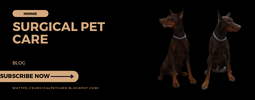Dog spaying is a significant surgery that requires careful consideration and preparation.
As a dog owner, you may have questions about what to expect during your furry friend's recovery period.
In this comprehensive guide, we'll walk you through everything you need to know about dog spay recovery, from pre-operative care to post-operative care.
Pre-Operative Care
- Before the surgery, it's essential to follow a few guidelines to ensure that your dog is ready for the procedure.
- Your veterinarian will provide you with specific instructions on what to do before the surgery.
Here are some things to keep in mind:
Fasting:
- Your dog should fast for at least 12 hours before the surgery. This means no food or water.
Exercise:
- Your dog should avoid exercise for at least 24 hours before the surgery.
Medications:
- If your dog is on any medications, your veterinarian will advise you on whether to stop or continue them before the surgery.
Health Check:
- Your dog will undergo a thorough physical examination before the surgery.
- This is to ensure that they are healthy enough for the procedure.
Watch a video :
Post-Operative Care
After the surgery, your dog will need special care and attention to ensure a smooth and successful recovery.
Here are some things to keep in mind:
Rest:
- Your dog should get plenty of rest and avoid any physical activity for at least ten days after the surgery.
Feeding:
- Your dog may be hungry after the surgery, but it's essential to follow your veterinarian's instructions on feeding.
- Your dog may be given a small amount of water and food after a few hours of the surgery.
- It is essential to ensure that your dog does not overeat, as this can lead to complications.
Medications:
- Your veterinarian may prescribe pain medication or antibiotics to help your dog recover.
- Ensure that you follow the medication instructions carefully.
Incision Care:
- Your dog's incision site will need special care to ensure that it heals correctly.
- Your veterinarian will provide instructions on how to clean and care for the incision site.
Monitoring:
- Watch your dog carefully for any signs of complications, such as excessive swelling, bleeding, or discharge.
- Contact your veterinarian immediately if you notice any of these signs.
Surgical pet shirts :
- An alternative to the cone of shame is a surgical shirt or recovery suit.
- This garment covers your dog's surgical site, preventing them from licking or scratching it while still allowing them to move around freely.
- Surgical shirts are made of soft, breathable material and come in various sizes to fit your dog comfortably.
- Not only do they help your dog recover more comfortably, but they also reduce their stress and anxiety levels, which can aid in the healing process.
- If you're considering using a surgical shirt as an alternative to the cone of shame, speak to your veterinarian to see if it's a suitable option for your dog.
Conclusion
Dog spaying is a significant surgery that requires careful consideration and preparation.
After the surgery, your furry friend will need special care and attention to ensure a smooth and successful recovery.
By following your veterinarian's instructions and providing your dog with plenty of love and attention, you can help them recover from the surgery as quickly and comfortably as possible.
Remember, if you have any concerns or questions about your dog's recovery, don't hesitate to contact your veterinarian.





0 Comments